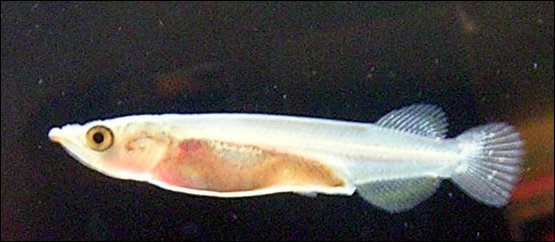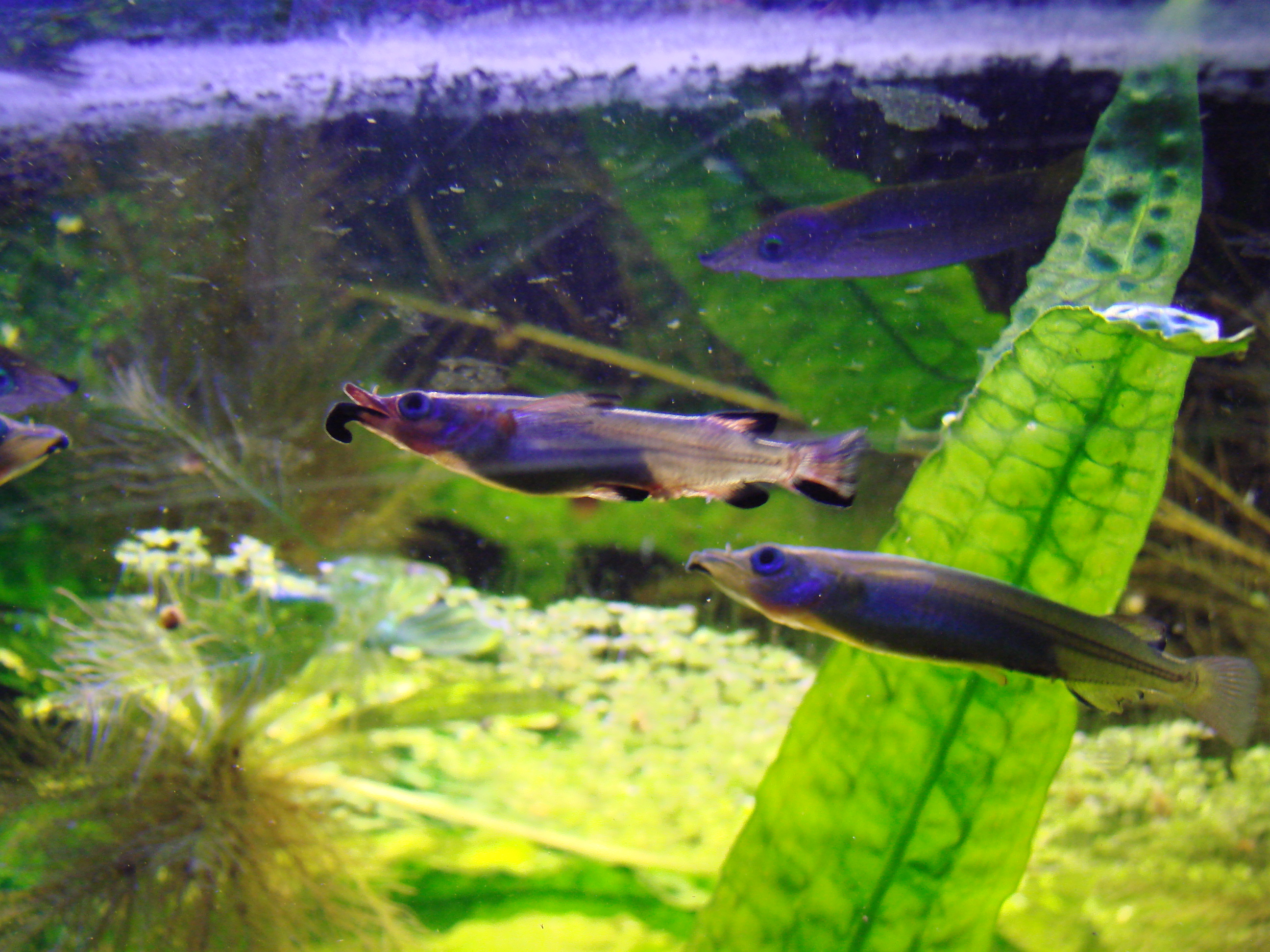Nomorhamphus on:
[Wikipedia]
[Google]
[Amazon]
''Nomorhamphus'' is a southeast Asian genus of

 ''Nomorhamphus'' species are livebearing fish that practise internal fertilisation. The male is equipped with a
''Nomorhamphus'' species are livebearing fish that practise internal fertilisation. The male is equipped with a
viviparous halfbeak
Zenarchopteridae, the viviparous halfbeaks, is a family in the order Beloniformes. The Zenarchopteridae exhibit strong sexual dimorphism, practicing internal fertilisation, and in some cases ovoviviparous or viviparous (the family also includes ...
s from streams, rivers and lakes in Sulawesi (Indonesia
Indonesia, officially the Republic of Indonesia, is a country in Southeast Asia and Oceania between the Indian and Pacific oceans. It consists of over 17,000 islands, including Sumatra, Java, Sulawesi, and parts of Borneo and New Guine ...
) and the Philippines
The Philippines (; fil, Pilipinas, links=no), officially the Republic of the Philippines ( fil, Republika ng Pilipinas, links=no),
* bik, Republika kan Filipinas
* ceb, Republika sa Pilipinas
* cbk, República de Filipinas
* hil, Republ ...
. They are all viviparous
Among animals, viviparity is development of the embryo inside the body of the parent. This is opposed to oviparity which is a reproductive mode in which females lay developing eggs that complete their development and hatch externally from the ...
, producing small clutches of around a dozen fry about 10 to 15 mm long at birth. Females are generally larger than the males. In the largest species, such as ''Nomorhamphus liemi'', the females typically reach about in length, whereas the males reach about in length. Males are also more brightly coloured than the females (often having red, black, or blue patches on their fins). Compared with many other halfbeaks, the lower mandible
In anatomy, the mandible, lower jaw or jawbone is the largest, strongest and lowest bone in the human facial skeleton. It forms the lower jaw and holds the lower teeth in place. The mandible sits beneath the maxilla. It is the only movable bone ...
, or beak, is relatively short, on females in particular barely protruding beyond the length of the upper mandible. The males of some species (e.g., '' N. ebrardtii'') have short, straight beaks, but those of others (e.g., '' N. liemi'') have short beaks that curve downwards forming a shape often compared to a goatee
A goatee is a style of facial hair incorporating hair on one's chin but not the cheeks. The exact nature of the style has varied according to time and culture.
Description
Until the late 20th century, the term ''goatee'' was used to refer sol ...
beard by aquarist
An aquarist is a person who manages aquariums, either professionally or as a hobby. They typically care for aquatic animals, including fish and marine invertebrates. Some may care for aquatic mammals. Aquarists often work at public aquariums. They ...
s. '' N. aenigma'' is unique within ''Nomorhamphus'' because of its lack of lower jaw elongation.
''Nomorhamphus'' feed extensively on small insect
Insects (from Latin ') are pancrustacean hexapod invertebrates of the class Insecta. They are the largest group within the arthropod phylum. Insects have a chitinous exoskeleton, a three-part body ( head, thorax and abdomen), three ...
s, either in the form of aquatic larva
A larva (; plural larvae ) is a distinct juvenile form many animals undergo before metamorphosis into adults. Animals with indirect development such as insects, amphibians, or cnidarians typically have a larval phase of their life cycle.
...
e or as flying insects that have fallen onto the surface of the water. They are important predators on insects such as mosquito
Mosquitoes (or mosquitos) are members of a group of almost 3,600 species of small flies within the family Culicidae (from the Latin ''culex'' meaning " gnat"). The word "mosquito" (formed by ''mosca'' and diminutive ''-ito'') is Spanish for "li ...
es, so play a role in controlling malaria
Malaria is a mosquito-borne infectious disease that affects humans and other animals. Malaria causes symptoms that typically include fever, tiredness, vomiting, and headaches. In severe cases, it can cause jaundice, seizures, coma, or death. S ...
. ''Nomorhamphus'' are too small to be of value as food, but they do have some value as aquarium fish.
Reproduction

gonopodium
Fins are distinctive anatomical features composed of bony spines or rays protruding from the body of a fish. They are covered with skin and joined together either in a webbed fashion, as seen in most bony fish, or similar to a flipper, as see ...
-like anal fin known as a gonopodium that delivers sperm into the female. The gestation period is about six weeks. The exact mode of reproduction ranges from ovoviviparity through to viviparity
Among animals, viviparity is development of the embryo inside the body of the parent. This is opposed to oviparity which is a reproductive mode in which females lay developing eggs that complete their development and hatch externally from the ...
, and in some species, oophagy
Oophagy ( ) sometimes ovophagy, literally "egg eating", is the practice of
embryos feeding on eggs produced by the ovary while still inside the mother's uterus. The word oophagy is formed from the classical Greek (, "egg") and classical Greek (, ...
is known, as well. Only around ten to twenty embryos are developed at a time, but at birth these are fairly large (around ) and well developed, able to take small prey, such as ''Daphnia
''Daphnia'' is a genus of small planktonic crustaceans, in length. ''Daphnia'' are members of the order Anomopoda, and are one of the several small aquatic crustaceans commonly called water fleas because their saltatory swimming style resembl ...
'', immediately after birth.
Species
There are currently 20 recognized species in this genus: * '' Nomorhamphus aenigma''Kobayashi
Kobayashi (written: lit. "small forest") is the 8th most common Japanese surname. A less common variant is . Notable people with the surname include:
Art figures
Film, television, theater and music
*, Japanese actress and voice actress
*, ...
, Masengi & Yamahira, 2020
*'' Nomorhamphus bakeri'' Fowler & B. A. Bean, 1922
* '' Nomorhamphus brembachi'' D. Vogt, 1978
* '' Nomorhamphus celebensis'' M. C. W. Weber & de Beaufort, 1922 (Poso halfbeak)
* '' Nomorhamphus ebrardtii'' Popta, 1912
* '' Nomorhamphus hageni'' Popta, 1912
* '' Nomorhamphus kolonodalensis'' A. D. Meisner & Louie, 2000
* '' Nomorhamphus lanceolatus'' Huylebrouck, Hadiaty & Herder, 2014 Huylebrouck, J., Hadiaty, R.K. & Herder, F. (2014): Two new species of viviparous halfbeaks (Atherinomorpha: Beloniformes: Zenarchopteridae) endemic to Sulawesi Tenggara, Indonesia. ''Raffles Bulletin of Zoology, 62: 200–209''.
* '' Nomorhamphus liemi'' D. Vogt, 1978
* '' Nomorhamphus manifesta'' A. D. Meisner, 2001
* '' Nomorhamphus megarrhamphus'' Brembach, 1982
* '' Nomorhamphus pectoralis'' Fowler, 1934
* '' Nomorhamphus philippina'' Ladiges, 1972
* '' Nomorhamphus pinnimaculata'' A. D. Meisner, 2001
* '' Nomorhamphus rex'' Huylebrouck, Hadiaty & Herder, 2012 Huylebrouck, J., Hadiaty, R.K. & Herder, F. (2012): Nomorhamphus rex, a new species of viviparous halfbeak (Atherinomorpha: Beloniformes: Zenarchopteridae) endemic to Sulawesi Selatan, Indonesia. ''The Raffles Bulletin of Zoology, 60 (2): 477-485.''
* '' Nomorhamphus rossi'' A. D. Meisner, 2001
* '' Nomorhamphus sagittarius'' Huylebrouck, Hadiaty & Herder, 2014
* '' Nomorhamphus towoetii'' Ladiges, 1972
* '' Nomorhamphus vivipara'' W. K. H. Peters, 1865
* '' Nomorhamphus weberi'' Boulenger, 1897
References
Further reading
* Scott, Peter (1997): Livebearing Fishes, Tetra Press, {{Taxonbar, from=Q2608677 Zenarchopteridae Live-bearing fish Viviparous fish Fishkeeping Ray-finned fish genera